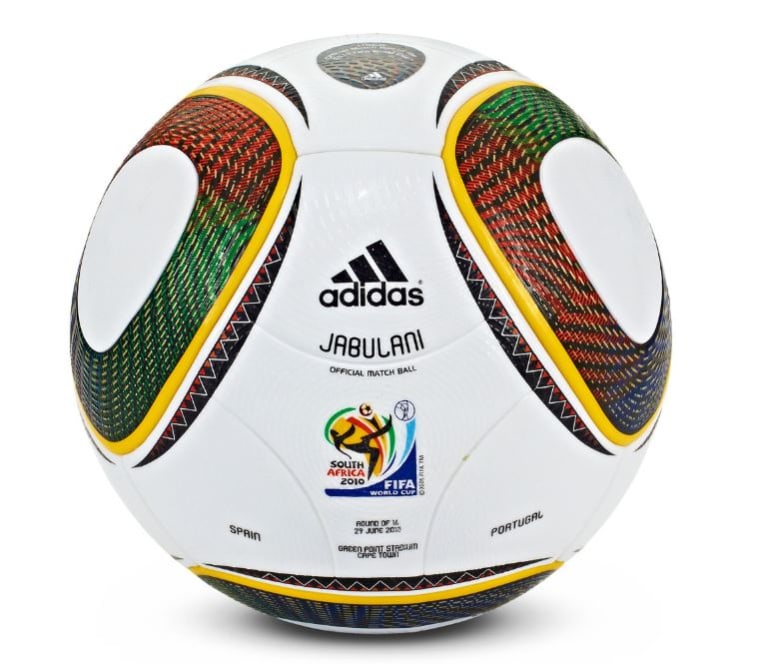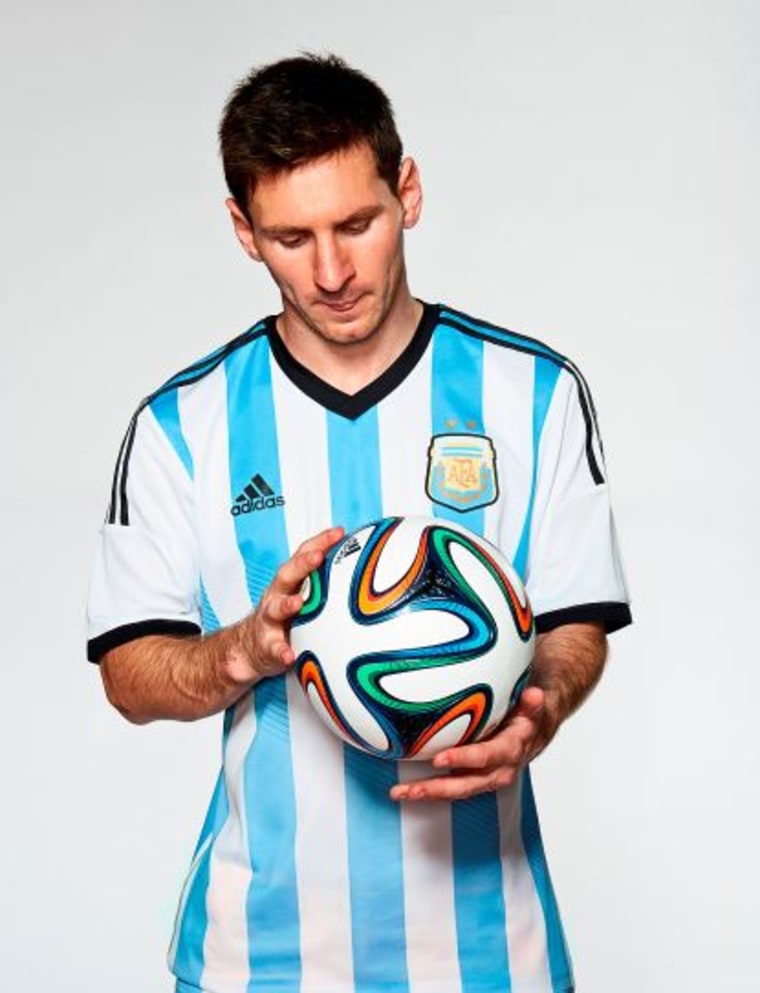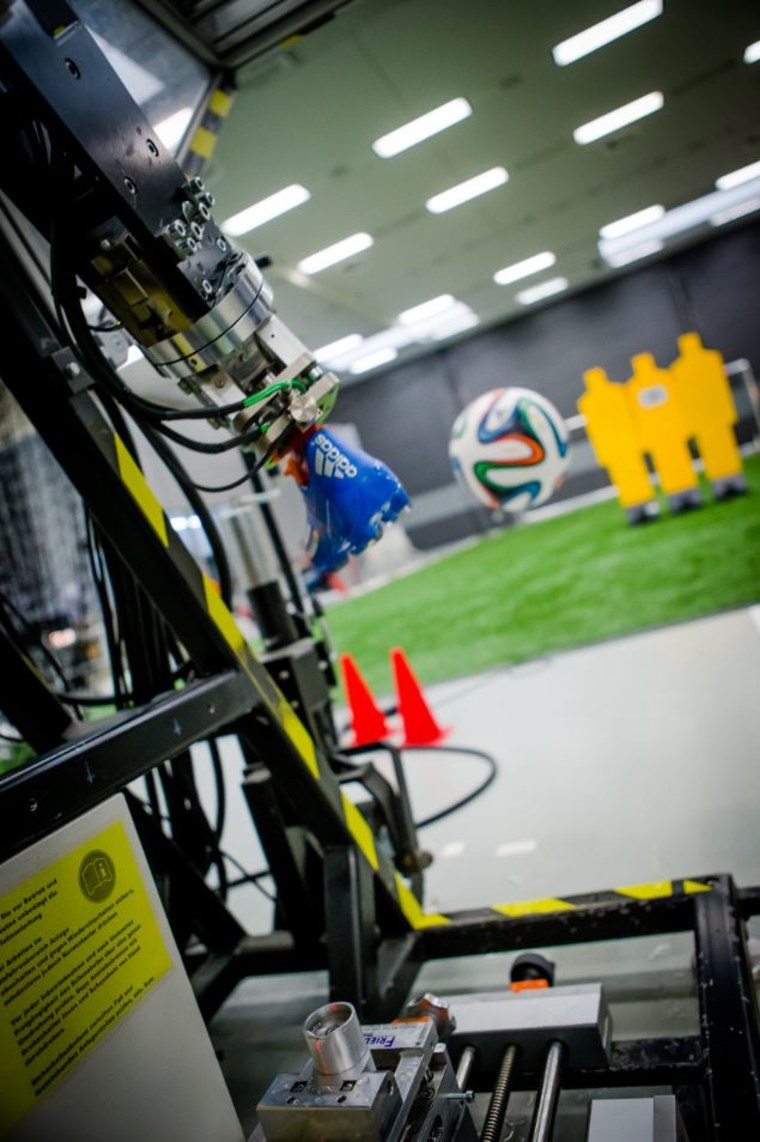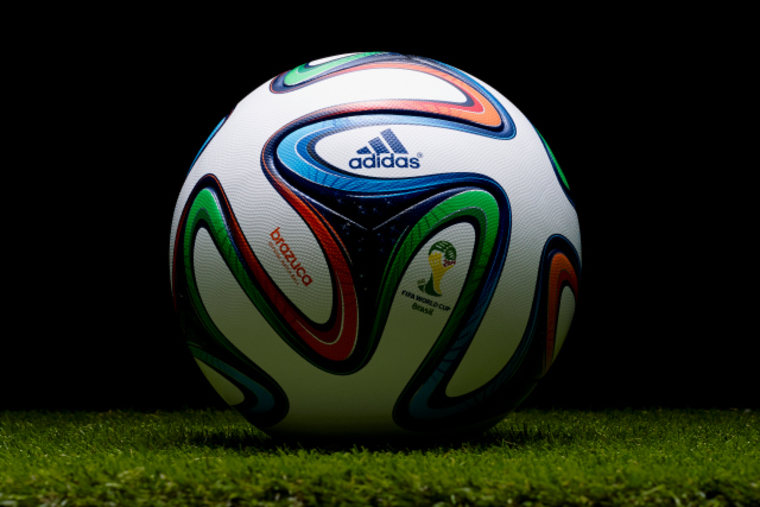With its reputation and millions on the line, Adidas has unveiled the "Brazuca," the official soccer match ball of the 2014 World Cup in Brazil. All eyes are on to see whether the company can avoid a repeat of the "Jabulani," the ball it designed for the 2010 World Cup in South Africa, which was heavily criticized by players for behaving erratically during the most widely watched sporting event in the world.
The Brazuca, sure to be coveted by kids from the barrios to the 'burbs, is now on sale in the US for $160 for an official match ready 100% polyurethane version, or $27 for one with a nylon/TPU carcass. The ball boasts several critical design innovations, most noticeably six identical "boomerang" shaped panels, fewer than the thirty-two seen on common soccerballs, as well as the Jabulani's eight. The Brazuca's swirling seam structure and a raised nub texture, similar to a basketball's, are supposed to improve its touch and aerodynamics.

That's also what they said last time about the Jabulani, but the ball slipped when it came to player approval.
Adidas designs a new, distinctive, ball for the World Cup every four years, and each time the ball is heavily scrutinized and critiqued. But the venom surrounding the Jabulani was particularly potent.
"Its trajectory is unpredictable," said Italian goalkeeper Gigi Buffon at the time. "You are going to kick it and it moves out of the way. I think it’s supernatural, it’s very bad," said Brazilian forward Luis Fabiano. And Manchester United's Michael Carrick said playing with the Jabulani was like using a "beach ball."
Even NASA weighed in. Older balls with rougher surfaces "knuckle," suddenly veering in flight, at around 30 mph.
But evaluation at NASA Ames Research Center showed the Jabulani, which had fewer seams and what was perceived as a glossier surface, knuckled when struck at speeds over 44 mph.
"The smoother you make it, the higher the speed at which it knuckles," said Rabi Mehta, Branch Chief at NASA Ames Research Center and an aerodynamics expert.
That meant that typical goal strikes at 50-60 mph, shots that professional players were paid millions a year and spent their lifetime perfecting in order to place with speed and precision, could unexpectedly swerve, bedeviling goalkeepers, outfield players and fans.
The goal this time around is simple to state, but hard to achieve.
"Let's make the ball go where they know they can put it," said Antonio Zea, director of innovation for Adidas.

The Brazuca, whose name was picked in a national poll of Brazilians and is an informal term sometimes shouted out in appreciation for a skillful move, underwent two-and-a-half years of testing, including kick after kick from a robot foot to ensure accurate flight on every strike.
"With the one panel shape we have a nice interlocking design that made it symmetrical and gave it balance. We're able to optimize seam geometry to give it accuracy in aerodynamics and a stable flight," said Zea.
Learning from its mistakes with the Jabulani, which had heavy input from academics, Adidas involved players early on in the design process. Key structural components were taken from the Tango 12 and Champions League balls, both of which are held in high regard by players. The company showed the new ball to 600 different players and interviewed 287, a third of which were non-Adidas sponsored.
The company also snuck the Brazuca, disguised with an older ball's patterning, into several matches to see how well it performed without players knowing they were playing with a new ball.
Adidas says players have told them the ball has good transfer of power from foot to ball, grips well, and that its flight is "consistent" and "fair."

"It plays well on the ground and in the air," said Barcelona's Dani Alves.
"The weight is really good which tells me it’s going to be a very reliable and true ball," said Liverpool's Steven Gerrard.
From a mathematical perspective, they may be right.
NASA's Mehta hasn't evaluated the Brazuca but he has seen closeup photos. "If you look at the seam area divided by the ball area it's larger," he said. "My theory is that the effective roughness compared to the previous ball is increased, which means the speed at which it knuckles is lower."
Ever at Nike's ankles in overall sales, Adidas looks to its sponsorship deal with World Cup governing body FIFA, estimated at $100 million, to boost its reach to soccer fans once every four years. In turn, those fans rely on Adidas to deliver a quality product.
Despite the criticism that surrounded the Jabulani, the company sold 13 million of the balls, and it plans to beat that with the improved ball.
"We will break the 2 billion euro ($2.7 billion) barrier next year," Adidas CEO Herbert Hainer told CNBC. "One of the key items will be the official match ball."
So how many more of the balls does the company hope to sell this time around?
"A lot. More than the Jabulani," said Adidas spokesman Patrick Minogue.
How fast they fly off the shelves, however, will depend on how well they fly from players' feet on the world stage next June and July.
Contact Ben Popken via ben.popken@nbcuni.com, @bpopken, or benpopkenwrites.com.
